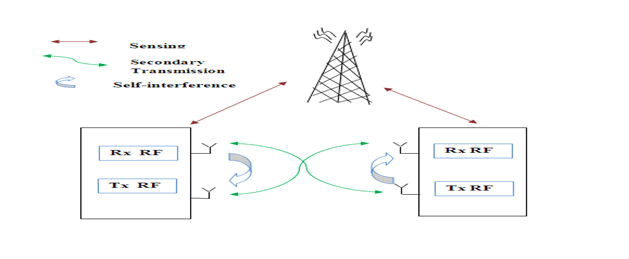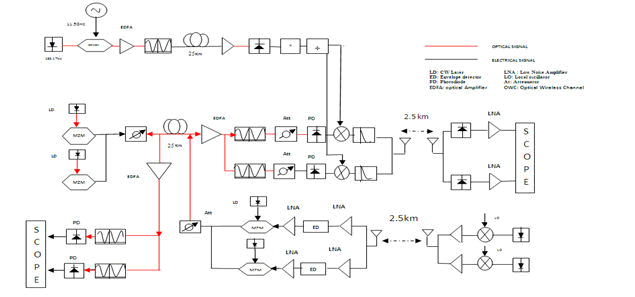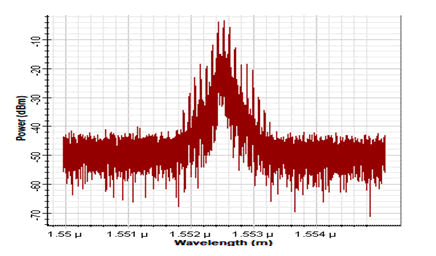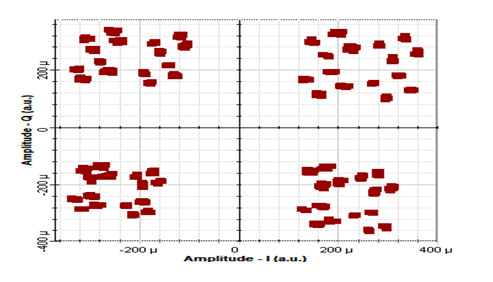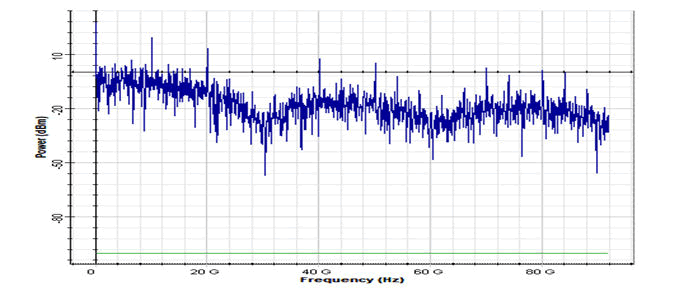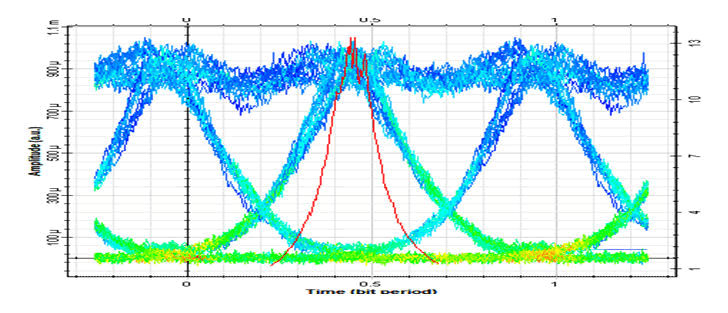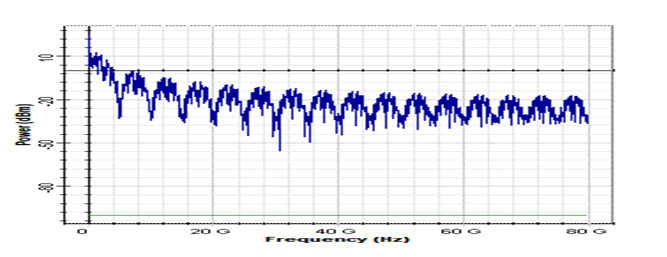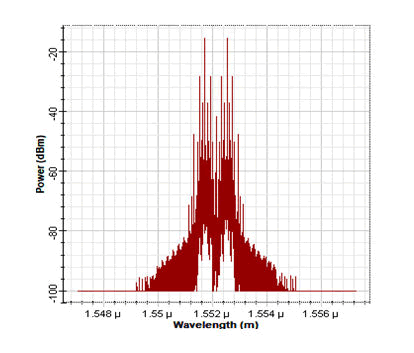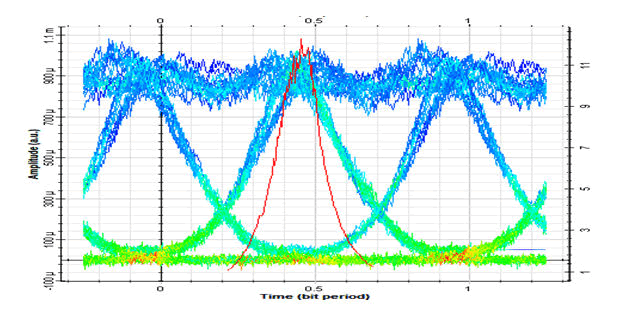Research Article, J Electr Eng Electron Technol Vol: 10 Issue: 10
Full Duplex 64 QAM OFDM 2x2MIMO Seamless Fiber- Wireless System
Bhumika Narang*, Baljeet Kaur, Harminder Kaur
Department of Electronics and Communication, Guru Nanak Dev Engineering College, Ludhiana, India
*Corresponding author:
Bhumika Narang, Department of Electronics and Communication, Guru Nanak Dev Engineering College, Ludhiana, India
E-mail: bhumikanarang17@gmail.com
Received date: October 04, 2021; Accepted date: October 18, 2021; Published date: October 25, 2021
Citation: Bhumika Narang (2021) Full Duplex 64 QAM OFDM 2x2MIMO Seamless Fiber-Wireless System. J Electr Eng Electron Technol 10:10.
Abstract
Full Duplex 64-QAM OFDM MIMO is used for transmitting the signal in uplink and downlink direction simultaneously. The performance and simulation of the system is done by RF carrier frequency at the W-band that enables the convergence between optical fiber and wireless system for access networking. The proposed system is based on WDM, PDM and 64-QAM OFDM techniques. The system is highly efficient with low latency and bit error rate. The system efficiency could be achieved by BER, Q-factor and eye height.
Keywords: Quadrature amplitudemodulation; Orthogonal frequency division multiplexing; Optical communication; Multiple Input and multiple output
Introduction
Upcoming generation facing plethora of hurdlers related to high speed and data rates. Moreover, there is worldwide plunge in mobile data trafficking with 4k folds over past 10 years and is estimated that it may increase 7 folds between 2019 and 2025. Many scholars approached to distinct techniques such as resilient spectrum management, mm-wave technique and many more to meet all these challenges. A promising solution to fulfill all such demands is Fiber wireless system as in this it provides flexible access network in dense small cell networks. Fi-Wi system has been proposed due to low latency, flexibility and low data rate transmission of signal. In such system, analog system is directly transmitted through the fiber and wireless channel without converting to the digital form. Full Duplex MIMO system is useful in 5G networks as Full Duplex system reduces the self interference and cross talks so that signal is send and received in resilient manner. Combination of Full Duplex with MIMO proved to be fruitful as it surged the capacity of data, secure, robust and also reduced the errors occurring during the transmission and reception of the signal .64-QAM technique is used which yields 64 times possible signal combination and transmission rate increased 6 times the signal rate. QAM OFDM technique enables to deduce the errors and make the system more flexible than other techniques. MIMO OFDM, data symbols are transmitted in narrow band frequency spectrum for longer period which is proved to be advantageous at the receiver side as it pull each one of the symbols, even if symbol has degraded there is better chance to pull the best symbol for longer time.WDM is used to transmit the multiple data streams in the optical fiber at same medium. Bidirectional fiber is used to transmit the signal in both forward and reverse direction same time without any delay. In proposed paper, 64-QAM OFDM signal is sent through 25 km of fiber distance and 2.5 km of the wireless distance.
Paper orientation is done as follow, I section is of introduction that elucidates the literature work. II section explains the experimental setup, III section demonstrates the outputs and result of work done in previous section and IV section is of conclusion.
Experiment
The experimental setup of Full Duplex 64 QAM OFDM MIMO seamless Fi-Wi is shown in (Figure 2).In the uplink, PRBS sent 40 Gb/s to the 64 QAM which is modulated by OFDM MIMO sequentially. The 6 bits from QAM is sent to the 2 M-ary pulse generator which fed the pulses to the OFDM which parallel sent the signal to IFFT where the cyclic prefix is fixed to one eighth of symbol period. From here, the signal is further transmitted to Frequency Doubler, which increases the frequency of the signal as 2x2 MIMO is used and it assists to increase the capacity. In Frequency Doubler, 2 amplitude signals are fed into MZM, one is from CW laser with-10 dBm of power at 193.1 THz of frequency and the other signal is from VCO at 11.5 GHz of frequency .The central Unit and Remote Area Unit is combined by 25 km. From here the signal is amplified by optical amplifier and then transmitted by 2 pin diodes and the amplified signal from electrical amplifier is send to the wireless channel. For downlink, the 2 optical signals is send to the MZM and passed through EDFA at 5m. The uplink and downlink signal is coupled through optical coupler and send to RAU through fiber at distance of 25 km. The signal from here transmitted through 2 pin diodes and data is recovered through data recovery component and fed to the MZM where signal is modulated by wave mixing and demodulated and send to the wireless channel by interfacing with MATLAB component in the OptiSystem. For wireless transmission coding of antenna has been done in editor window of MATLAB and distance RF carrier has been taken 2.5 km for both Uplink and downlink. Further the signal is send to the digital signal processing where 2 photodiodes were there connected with LNA and the output achieved from RF spectrum and Eye analyzer. In downlink, signal transmitted back from wireless channel at the frequency of 80 GHz through Local Oscillator and revert to the RAU after passing from wireless channel. In transmission domain, both Uplink and downlink has been transmitted at the same frequency, so the efficiency of the system is quite high.
Following are the parameters of 64 QAM OFDM 2x2 MIMO seamless fi-wi system in (Table 1).
| Parameters | Values |
|---|---|
| Bit Rate | 40 Gb/s |
| CW laser power | -10dBm |
| CW laser Frequency | 193.1THz |
| Optical Fiber length | 25 km |
| Wireless distance | 2.5 km |
| Local oscillator | 11.5 GHz |
| Transmission Frequency | 80 GHz |
| Bit per Symbol (QAM) | 6 |
| Number of FFT points | 512 |
Table 1: Simulation Parameters of Experimental Apparatus.
Experimental Results
PDM is the promising technique for the transmission of the signal of two waves at the same frequency which is used to communicate the signal through the optical fiber. Firstly, CW laser and 11.5 GHz of the frequency is fed into Dual-MZM and from here the signal is passed to band pass filter where the signal is filtered and transmitted to the SMF fiber and the output of the signal is achieved in (Figure 3).
The optical uplink signal which is transmitted from the single mode is send whose wavelength is 1550 nm and at the distance of 25 km. From here the signal is sent to the EDFA where the signal is amplified and transmitted to the QAM OFDM and the output of the signal is achieved by electrical constellation and the output of the bits are shown in (Figure 4).
From here the signal is transmitted to the antenna whose coding is done in MATLAB 15b in the editor window and the output of RF channel of Upstream is taken from RF spectrum analyzer and the quality of the signal is achieved from the eye analyzer as in (Figure 5) and (Figure 6).
The uplink RF carrier is achieved at 96 GHz at the output whereas the uplink signal at the input is 80 GHz. The efficiency of signal is achieved in the form of BER and Q-factor.
Downlink signal is send through the wireless channel at the frequency of 80 GHz which is sent from antenna whose coding is done in the editor window of MATLAB 15b and distance taken is 2.5 km. The transmitted RF signal is achieved at the output 80 GHz as in (Figure 7) which is same as the input signal of the downlink.
From here the signal is send to the remote area unit where 2 CW laser signals is fed to the MZM and signal is amplified by LNA and the signal is combined by WDM and Demodulated by DWDM and send to the central unit via Bidirectional optical fiber whose wavelength is 1550 nm and distance is 25 km and the output of the signal is shown in (Figure 8).
The quality and the capability of the downlink signal is achieved via Eye analyzer as in (Figure 9).
The comparison is done between the reported system and proposed system. As in the reported system, work had been done on uplink only at 60 GHz of the frequency where as in the current system the work is done on 80GHz of the frequency.
| PARAMETERS | REPORTED WORK [4] | PROPOSED SYSTEM | IMPROVED PERCENTAGE |
|---|---|---|---|
| MODULATION TECHNIQUE | 64-QAM OFDM | 64-QAM OFDM | - |
| Fiber length | 25km | 25 km | - |
| Frequency | 60 GHz | 80 GHz | 25% |
| Q-Factor | 5.675 | 12.667 | 58% |
Table 3: Comparison between Reported paper and proposed paper.
From the table it is observed that there is 58% of improvement in the signal at 80 GHz of the frequency in the case of uplink and the system is immensely reliable and efficient at W-band.
Conclusion
The transmission of input signal is at the frequency of 11.5 GHz in Central unit. The extracted RF signal is achieved at 96 GHz of frequency which resides between W-Band at the output. The downlink signal which is obtained at frequency of 80 GHz makes the system more resilient, efficient and also reduces the latency rate. The RF uplink signal is achieved at 96 GHz at the receiver side and the output signals received by EYE Diagram Analyzer are obtained by parameters Q-factor and BER. The uplink Q-factor is 12.2667 and BER is 6.2028e-035 that provides 58% better outcomes than reported paper. The proposed work is hybrid system in this uplink and downlink signal is send simultaneously. The downlink results of Q-factor are 13.3177 and BER is 8.31985e-041. Owing to escalation in data rates, the requirement and demands of customer for better services could be satisfied by the present system as this system provide new ladder to optical-wireless system. Many applications are based on this system like tele-medicines, Wi-max, IoT and many more.
References
- Puerta R, Yu J, Li X, Xu Y, Olmos JJV, et al. (2018) Single-Carrier Dual Polarization 328-Gb/s Wireless Transmission in a D-band Millimeter Wave 2 x 2 MIMO Radio-Over-Fiber System. J Light Technol 36: 587â?? 593.
- Smith GH, Novak D (1997) Full-duplex fiber-wireless system using electrical and optical SSB modulation for efficient broadband millimeter wave transpor. In Proc MWP 4: 223-226.
- Namdeo S, Rani R (2013) Designing and performance evaluation of 64 QAM OFDM system. IOSR J Electron Commun Engg 5: 597-1105.
- Mungara RK, kaur R (2017) Full-Duplex MIMO in cellular Networks: System-level Performance. IEEE Trans Wirel Commun 5: 3124-3137.
- Pang X, Juan JO, Monroy TI (2014) Ultragigabit W-Band (75-110GHz) Bidirectional Hybrid Fiber-Wireless Systems in Access networks. J Light Technol 32: 6-10.
 Spanish
Spanish  Chinese
Chinese  Russian
Russian  German
German  French
French  Japanese
Japanese  Portuguese
Portuguese  Hindi
Hindi 